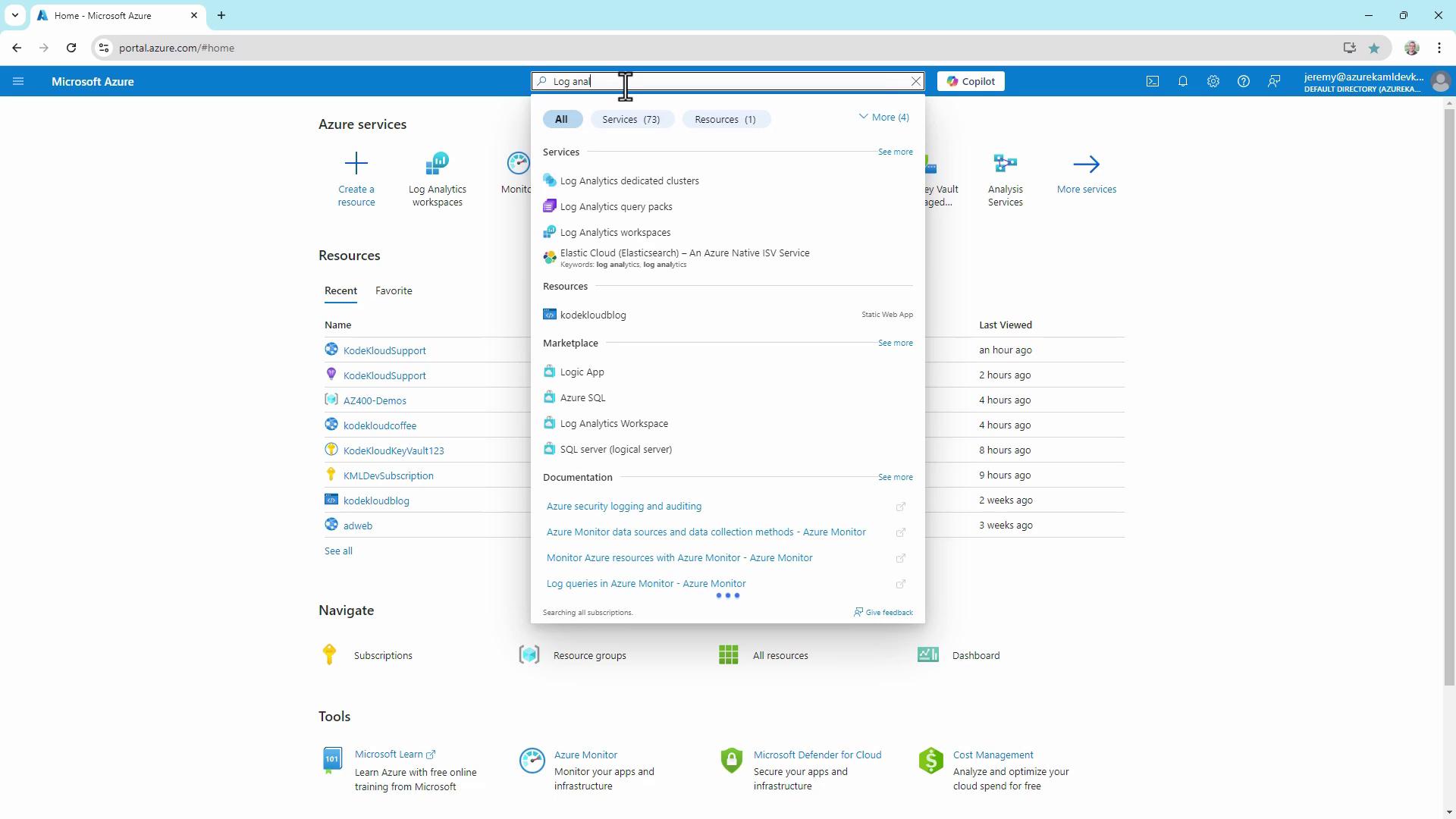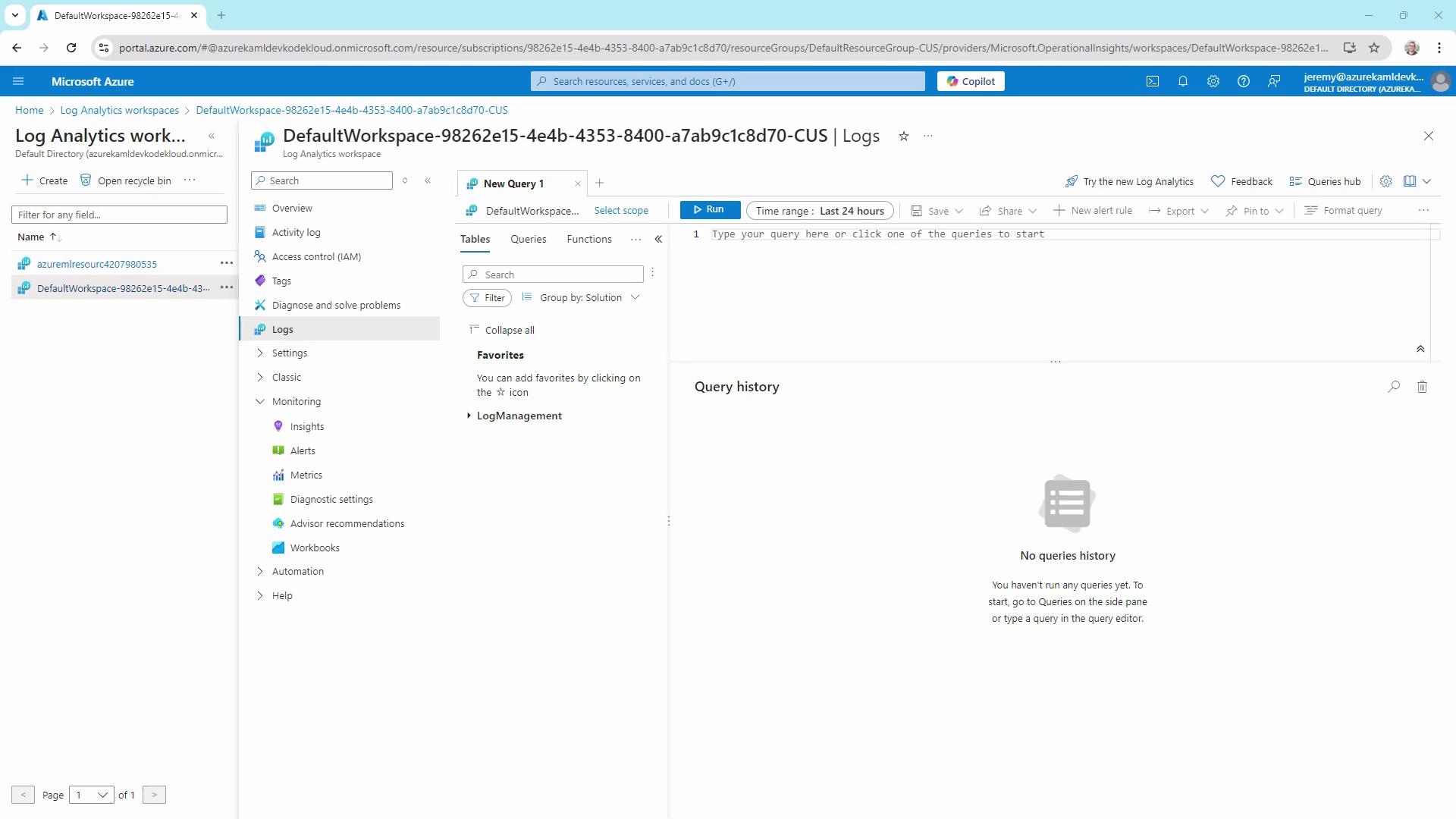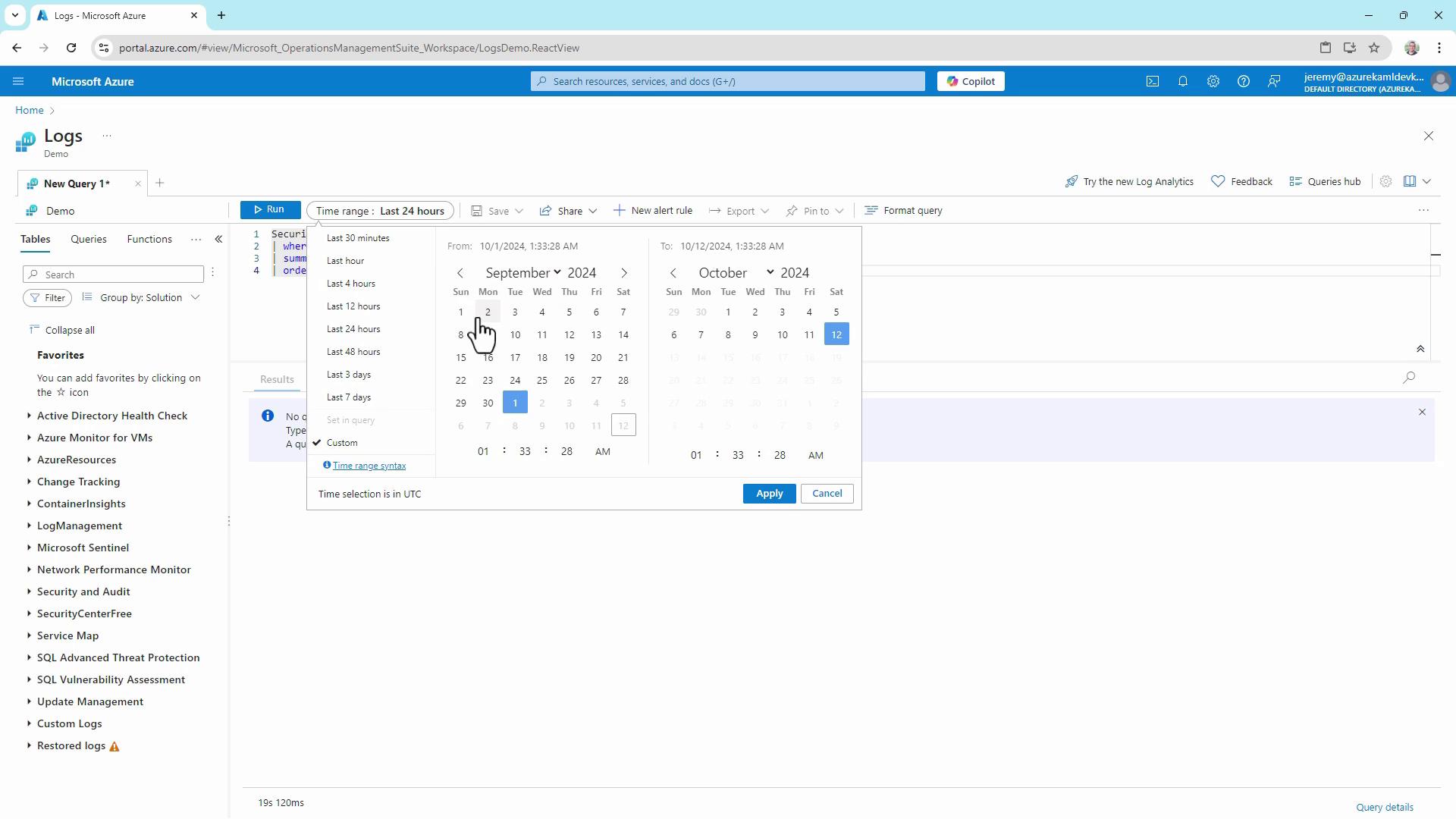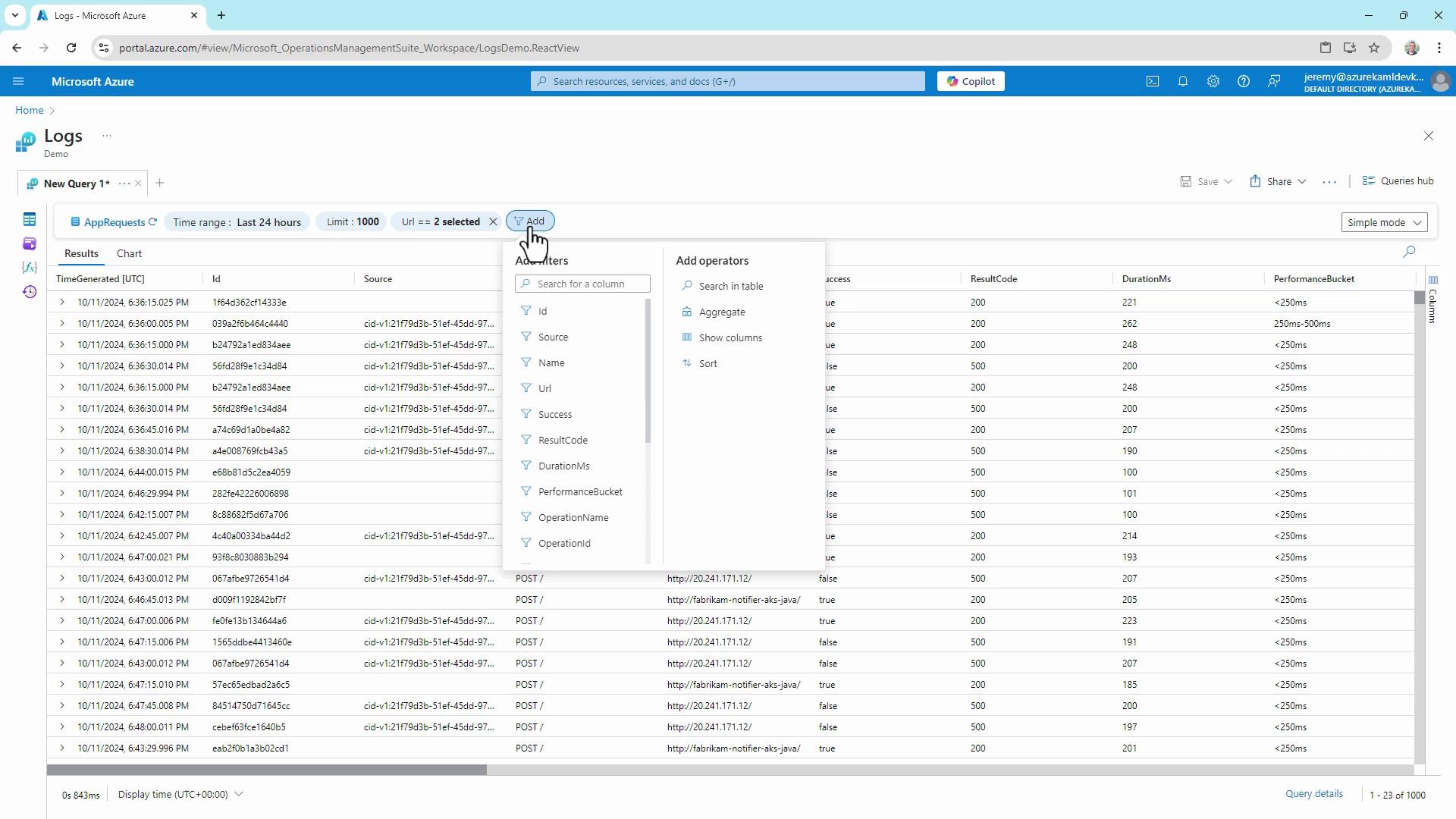AZ-400: Designing and Implementing Microsoft DevOps Solutions
Analyze Metrics
Interrogate logs using basic Kusto Query Language KQL queries
In this guide, you’ll learn how to use Kusto Query Language (KQL) to analyze logs in Azure Log Analytics. Whether you’re preparing for the AZ-400 exam or managing production environments, mastering KQL lets you filter, aggregate, and visualize log data efficiently.
Accessing Azure Log Analytics
- Sign in to the Azure portal.
- In the search bar, type Log Analytics and select the service.

- Choose your workspace and click Logs to launch the query interface.

All queries run from this Logs hub using KQL.
1. Filtering Security Log Data
Filtering is the foundation of any log investigation. Below are examples querying the SecurityEvent table.
Retrieve the last 24 hours of security events (limit to 10 records):
SecurityEvent
| where TimeGenerated > ago(1d)
| project TimeGenerated, Account, EventID, IpAddress, Computer
| take 10
Filter for failed logon attempts (EventID 4625) over the last 30 days:
SecurityEvent
| where TimeGenerated > ago(30d)
| where EventID == 4625
| project TimeGenerated, Account, EventID, IpAddress, Computer
| take 10
Understanding Event IDs
EventID 4625 indicates an account failed to log on. Use Microsoft’s official Event ID reference to explore other security events.
2. Summarizing Failed Logins by Account
To identify which accounts are targeted most frequently, aggregate and sort failed login counts:

SecurityEvent
| where TimeGenerated > ago(30d)
| where EventID == 4625
| summarize FailedLogins = count() by Account
| order by FailedLogins desc
Key KQL Functions
| Function | Description | Example |
|---|---|---|
| ago() | Filters records by relative time | where TimeGenerated > ago(7d) |
| project | Selects specific columns | project TimeGenerated, ResourceGroup |
| summarize | Aggregates rows | summarize count() by OperationName |
| order by | Sorts the output | order by count_ desc |
3. Querying Azure Resource Logs
Azure resource logs, including activity and diagnostic data, are stored in the AzureDiagnostics table.
Fetch the last 7 days of resource operations:
AzureDiagnostics
| where TimeGenerated > ago(7d)
| project TimeGenerated, Resource, ResourceGroup, OperationName, ResultType
| take 10
Filter to only failed operations:
AzureDiagnostics
| where TimeGenerated > ago(7d)
| where ResultType == "Failed"
| project TimeGenerated, Resource, ResourceGroup, OperationName, ResultType
| take 10
4. Switching Between UI and KQL Modes
Azure Log Analytics now offers two query experiences:
- Simple Mode: Drag-and-drop interface to select tables, apply filters, and set limits without writing code.
- KQL Mode: Full control to write custom queries.
Toggle modes via More analytics settings in the Logs pane.

5. Sharing and Exporting Results
Once your query returns data, you can:
- Copy a secure link to share the query
- Export results to CSV (all rows or displayed columns)
- Copy results to the clipboard
Warning
Be cautious when sharing or exporting sensitive log data. Always follow your organization’s data governance policies.
With these techniques, you can:
- Filter and project security events
- Aggregate and rank failed logins
- Query Azure resource diagnostics
- Navigate both UI-driven and code-driven analysis
- Securely share or export log data
Links and References
Watch Video
Watch video content